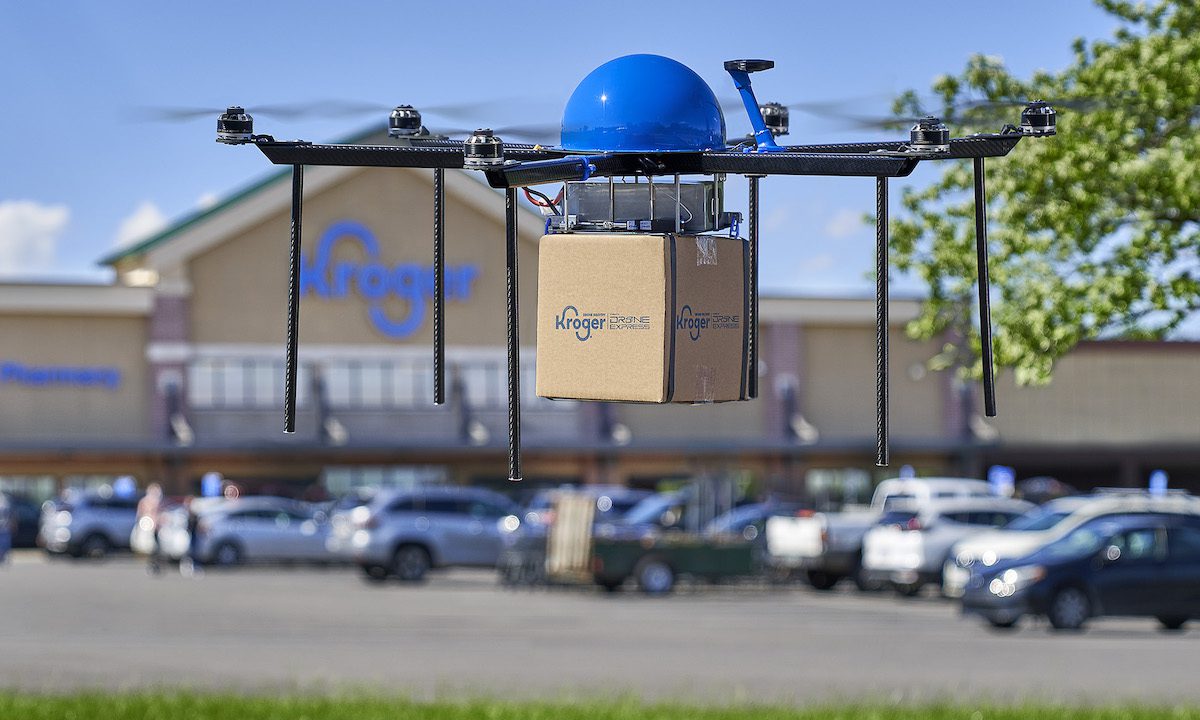Drone Express CTO: Fully Autonomous Grocery Delivery Is on Its Way

The grocery delivery space has grown enormously since the start of the pandemic. What began for many as a safety measure offering a low-contact way to obtain food quickly became an indispensable part of many consumers’ routines. However, there are fundamental flaws in e-grocery: For the majority of consumers, the channel still does not fit into their lives. PYMNTS data finds that only 27 percent of consumers are ordering groceries for delivery more than before the start of the pandemic, compared to 48 percent ordering restaurant meals.
Related news: Mercatus Integrates ‘Instacart Connect’ as Third-Party Marketplaces Tighten Their Hold on Merchants
Ultimately, with the order fulfillment options that are available today, the channel faces a near-impossible tradeoff: profitability versus meeting consumers’ evolving habits. Grocers require large order volumes to make the economics of grocery delivery work, especially with today’s labor shortage. However, consumers no longer want to make large purchases, planning their eating in advance. That’s where drone delivery comes in.
Read more: Fixing the ‘Broken Economics’ of Grocery Delivery
“For grocers especially, drone delivery is a game-changer. It gives them something to really compete against online retailers,” Beth Flippo, chief technology officer for Drone Express, told PYMNTS in an interview. “Most people in the country … are buying food in smaller quantities at a higher frequency … People buy throughout the week, there’s a lot less waste, and they buy what they need, when they want it.”
Drone Express, a subsidiary of the communications company TELEGRID Technologies, is currently working with grocery giant Kroger on a drone delivery pilot in Centerville, Ohio.
See also: Kroger Tests Drone for Delivering Supermarket Goods to Customers
The Present
The company has not been seeing the slow adoption that one might expect from a technology that is relatively unfamiliar to many consumers, according to Flippo. She added that most orders are fulfilled within 15 minutes, and that consumers are glad for the chance to get their items delivered without having to tip a human worker.
“Consumers love it, and it’s shocking how incredibly the people out here really want this,” she said. “We’re excited to see that people are using it for real, not as a gimmick.”
Flippo noted that most of the leading grocery delivery services — from digitally native e-grocers to in-house fulfillment for major retailers such as Walmart and Target to third-party providers like Instacart — have order minimums in place. Conversely, the company’s drones are currently only fulfilling orders up to five pounds, and they make it easy for consumers to place even single-item orders.
“On Saturday morning, we had two people order bagels and cream cheese,” she said. “And it’s such a perfect use case. It wasn’t great weather. They didn’t want to leave the house, and they got their bagels and cream cheese in their pajamas.”
The Near-Term Future
As changing regulations from the United States Federal Aviation Administration (FAA) make it possible for drones to be deployed in more places for more use cases, Flippo noted that the next couple of technological advances will involve enabling the drones to bear heavier loads and to navigate more severe weather.
Currently, Drone Express’ drones are capable of carrying up to 15 pounds, though the company is limiting orders to five pounds. Flippo noted for reference that the average rotisserie chicken is about 2.5 pounds.
“We’re not trying to stress the drone,” she said. “We’re trying to create this solution for a need that exists, and we’re just trying to see what we can do in five pounds.”
Regarding weather, Flippo noted that the company plans to make it possible for drones to continue delivering in extreme winds. Still, with drone technology where it is today, demand among grocers is high.
“We have heard from Kroger, and from the industry in general, that everybody wants this,” Flippo said. “They know this is what’s going to set them apart now … In five years, I see drones being everywhere. I see it being fully automated.”
The Longer-Term Future
As a communications company, Drone Express is especially interested in how drones can communicate with other digital programs and devices. In fact, its first innovation was a mesh network that “allowed multiple drones to talk to each other in the sky and … to talk to multiple people on the ground.”
In today’s connected economy, leading companies can leverage their products and/or services as a digital front door to grant customers access to a digital ecosystem of connected experiences. This is just what Flippo envisions for Drone Express, seeing a future in which integrated systems interact to provide an end-to-end automated delivery journey.
You may also like: How Consumers Live in the Connected Economy
“Eventually, your Tesla will be sitting in a parking lot. You’ll be in your office. You’ll order something. The drone will talk to the car. The car will open its trunk. It will deliver the package into the trunk and fly off,” Flippo said. “That’s what we really want to get to, where the robots on the ground hand off to the drones in the air, and the drones in the air talk to each other and find perches to land and charge … That’s the amazing part about drones for us.”
